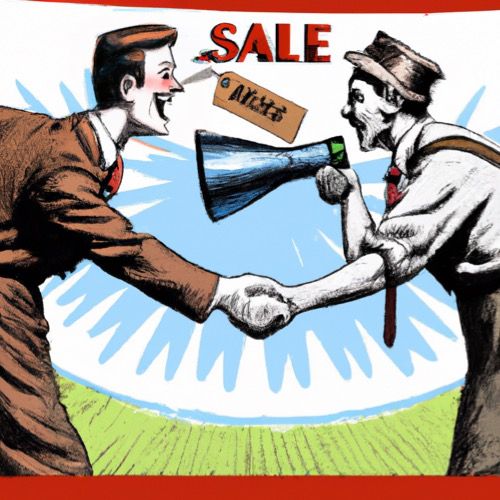
The Magician: Demand or Lead Generation?
Knowing the difference in sales
“Content builds relationships. Relationships are built on trust. Trust drives revenue.”
– Andrew Davis
There I was in 2017, back when conferences were cool, and we didn’t wear masks. I had booth duty this morning, and I was looking for a Cup o’ Morning Joe, you know, that great tasting hotel coffee that’s been cooking in the pot for 18 hours. I turned the corner and almost started laughing out loud. The big booth down the way from ours had a magician in a purple velour jacket, with a white bird on his shoulder doing card tricks and collecting business cards. My first thought, “ah the marketing team must be getting bonused on the number of leads collected at this show.” So, this is how this amazing (?) case study on the difference between lead generation and demand generation begins. Useless effort, or marketing genius? The answer: it depends.
Were those specific leads going to be handed to sales for follow? Completely useless waste of time and sales engine power, and those marketers will quickly gain the “useless lead generator” moniker.
Or, were they going to be held in a different bucket, and used to build a database and target the broader community over time to educate, engage and create market awareness and eventually demand for our products and offerings? Then Captain Magic had a dedicated purpose. By the way, I asked him later, and he had collected 3,000 business cards over a 4-day conference span.
A basic illustration to initiate the outline of differences between demand generation and lead generation. So, let’s dive in.
What’s more crucial for B2B marketing and sales teams: creating demand or generating leads?
It’s like questioning if airplane wings or landing gear are more crucial to revenue generation. Each one contributes in its own unique way to keeping the engine pumping.
Lead generation and demand creation may have some overlap in terms of their ultimate goals, but that doesn’t make them the same thing. The phrases are distinct, although some B2B marketers have a terrible tendency of mushing them together interchangeably. Although lead gen is a subset of demand gen, it nonetheless needs its own unique set of knowledge, expertise, and strategies.
To confuse lead generation with demand generation is to risk losing leads and paying excessively for those that are acquired, and in lost sales effort to convert. Differentiating between the two in your B2B marketing approach will help you generate more leads that sales will accept and turn into revenue at a lower Cost per Lead (CPL) when acquiring prospect targets.
Comparing Demand Gen vs Lead Gen
When comparing demand generation and lead generation, just what are the key differences? Demand generation is the act of arousing interest and awareness in your product or service among potential buyers; lead generation is the process of converting that interest into actionable contact information (leads) that you or your sales teams may aggressively pursue.
Getting potential customers to recognize they have a problem you can address and progressing a growing trust in your brand to their genuine enthusiasm for what you can achieve for them is what we call “demand generation.” Whether it’s through the dissemination of free resources and tools that demonstrate the value of your services or through the dissemination of influencer posts from your leadership that exhibit your brand values, there are many ways to increase product awareness and the value of your brand.
The process of generating leads takes this curiosity and transforms it into something useful and doable. If the goal of the campaign is to collect contact information, then it is a lead generation campaign rather than a demand generation campaign.
A lead generation campaign is when material/content is gated behind a form that requests contact information and subsequently distributed to a certain demographic for a price: disclosure of who they are. Instead of trying to get as many people as possible to interact with your content, you should focus on collecting as many quality leads as possible by making it simple for individuals to provide their contact information.
In contrast, if you make material available for “price”, yet invest resources into reaching as many potential customers as possible, you are essentially engaged in demand generation. You’re shelling out cash in the hopes that as many individuals as possible will listen to what you have to say, investigate your company and your viewpoint, value your knowledge, and begin to consider why they would want to make a purchase from you. Ideally, there would be no obstructions to that.
People often confuse demand generation with lead generation. Simply said, lead generation focuses on gathering contact information from potential customers while demand generation builds the impetus ($20 word of the day).
Lead generation and demand generation often get mixed up with one another because they share many of the same strategies and methods. Each one is enhanced by interesting, pertinent information, and each one is optimized by astute, pinpoint targeting. However, the goals of the targeting and content employed in demand generation and lead generation are distinct.
So back to our case study of Captain Magic. It turns out his efforts were separate from the booth team. His sole purpose was to gather contacts for a broad market education campaign the following quarter (I handed him my card to see and track). Never underestimate the power of magic ;).
In sales, it pays to understand our marketers and how they work their magic. Now go forth and spread the word. Happy selling!
lead gen vs demand gen, differences between lead generation and demand generation